Skin
Natural Moisturizer for Sensitive Skin:
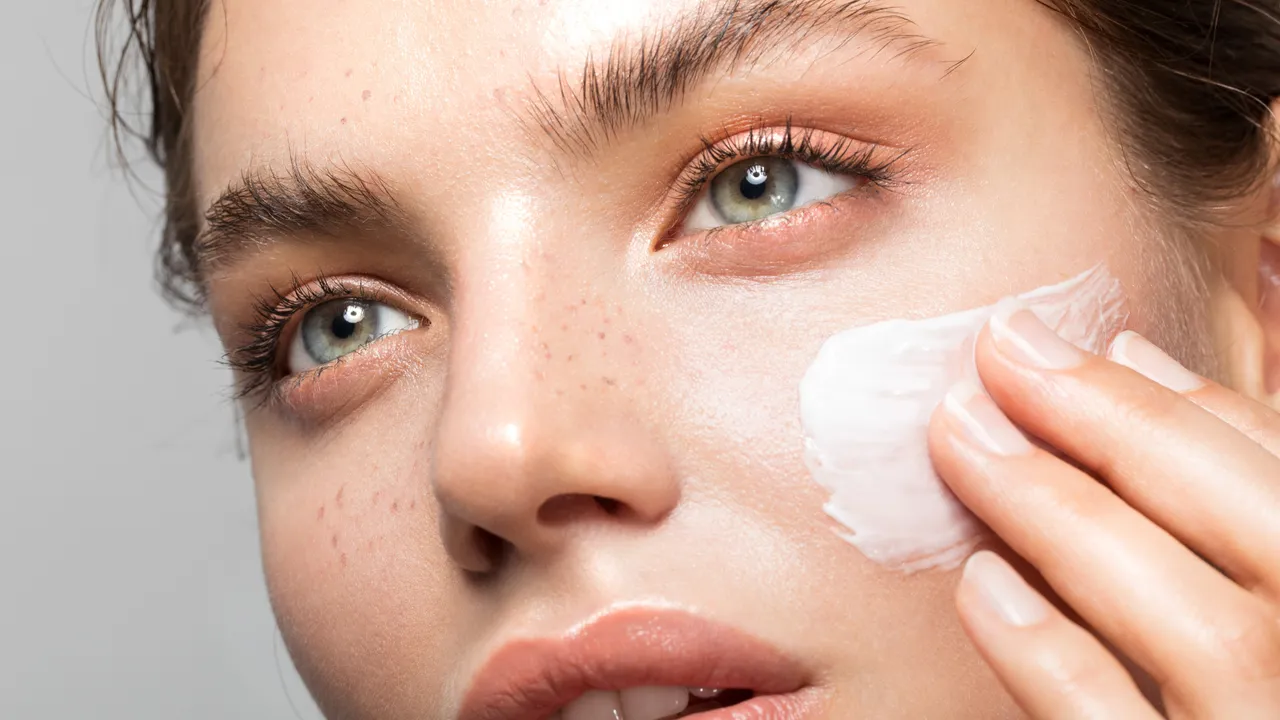
It can be difficult to choose the best moisturizer if you have sensitive skin. It seems like every product on the market contains a long list of unpronounceable ingredients, many of which can cause breakouts, redness, or irritation. However, what if there was an alternative to those harsh chemicals for nourishing your skin? Let’s talk about natural moisturizers! We’ll go over the benefits of using natural ingredients, what to look for, and even how to make your own moisturizers at home in this guide. Let’s get started!
What Is Sensitive Skin?
Although it can be difficult to identify, sensitive skin is typically defined by responses to specific products or environmental elements that other people do not experience. Redness, itching, burning, dryness, and breakouts are some of the symptoms. Environmental stressors such as pollution, weather variations, and even emotional stress can cause this skin type to react more strongly.
Common Characteristics of Sensitive Skin
- Prone to redness and irritation
- Easily affected by harsh skincare products
- Feels dry, tight, or itchy, especially after washing
Causes of Sensitive Skin

Numerous factors, such as genetic predisposition, environmental exposure, allergies, or excessive use of specific skincare products, can lead to sensitive skin. You can better manage and protect your skin by being aware of these causes.
Why Natural Moisturizers?
Since natural moisturizers frequently don’t contain artificial chemicals that irritate skin, they can be a game-changer for sensitive skin. Without the harsh additives present in many commercial moisturizers, these products hydrate, soothe, and protect using plant-based and other natural ingredients.
Benefits of Using Natural Ingredients
- Fewer synthetic chemicals mean less chance of irritation.
- Naturally derived ingredients often have healing properties.
- They tend to be biodegradable and eco-friendly.
Avoiding Harsh Chemicals
Alcohol, fragrances, and preservatives found in many traditional skincare products can aggravate sensitive skin. Exposure to these irritants is reduced when going natural.
Key Ingredients to Look for in Natural Moisturizers
Knowing what ingredients work well with sensitive skin is crucial. Here are some powerhouse natural ingredients that can provide hydration and nourishment without irritating.
Aloe Vera: Nature’s Soothing Agent
Aloe vera is known for its soothing and anti-inflammatory properties, making it perfect for sensitive skin. It helps calm redness and irritation while providing light moisture.
Chamomile: Calming Properties
It’s not just tea that uses chamomile! Its calming qualities can lessen redness and inflammation. It works particularly well to soothe irritated, sensitive skin.
Oatmeal: A Gentle, Natural Emollient
Since ancient times, oatmeal has been used to soothe sensitive and dry skin. It restores the skin’s natural barrier and acts as a mild moisturizer.
Shea Butter: Hydration and Healing Power
Rich in vitamins A and E, shea butter is incredibly moisturizing and helps heal damaged skin. Its thick, creamy consistency is great for dry, sensitive skin.
Coconut Oil: Nourishing and Protective

One excellent natural moisturizer that deeply hydrates the skin is coconut oil. Additionally, it has antibacterial qualities that may be beneficial for skin that breaks out easily.
Jojoba Oil: Balancing the Skin’s Natural Oils
Jojoba oil is perfect for sensitive skin types because it closely resembles the sebum produced by the skin. It keeps skin hydrated and aids in controlling oil production.
Honey: Natural Humectant
Honey is a great ingredient for sensitive skin because it draws moisture into the skin without irritating it. Plus, its antibacterial properties can help prevent breakouts.
Ingredients to Avoid in Moisturizers for Sensitive Skin
Just as important as what to include is what to avoid. Certain ingredients can spell disaster for sensitive skin.
Synthetic Fragrances
Fragrances, whether natural or synthetic, can often irritate sensitive skin. Opt for fragrance-free products.
Parabens and Phthalates
These are common preservatives in skincare products but can disrupt your skin’s natural balance and cause irritation.
Alcohol and Harsh Preservatives
Alcohol in skincare can dry out the skin, making it more prone to sensitivity. Look for alcohol-free options instead.
DIY Natural Moisturizer Recipes for Sensitive Skin
Want to take matters into your own hands? These simple DIY moisturizers use all-natural ingredients to nourish sensitive skin.
Aloe Vera and Coconut Oil Blend
- 2 tablespoons of aloe vera gel
- 1 tablespoon of coconut oil
Blend and apply to the skin for a light, soothing moisturizer.
Oatmeal and Honey Mask
- 1 tablespoon of finely ground oats
- 1 tablespoon of honey
Mix and apply as a face mask to calm irritated skin.
Shea Butter and Jojoba Oil Cream
- 3 tablespoons of shea butter
- 2 teaspoons of jojoba oil
Melt and mix for a rich, creamy moisturizer.
Store-Bought Natural Moisturizer Options
If DIY isn’t your thing, there are plenty of natural moisturizers available that cater to sensitive skin.
Best Brands Offering Natural Moisturizers
- Burt’s Bees: Known for their natural ingredients and gentle formulations.
- Weleda: Offers a range of products made from organic plant extracts.
- Pai Skincare: Specializes in products for sensitive and reactive skin.
How to Read Labels for Sensitive Skin Products
Look for terms like “suitable for sensitive skin,” “fragrance-free,” and “non-comedogenic.” Steer clear of products that contain alcohol or lengthy lists of chemical ingredients.
The Role of Hydration and Diet in Skin Moisture
While moisturizers play a big role, your hydration levels and diet also affect your skin.
Importance of Drinking Water
It’s equally important to stay hydrated internally. To maintain hydrated and healthy skin, try to drink eight glasses of water or more each day.
Foods That Support Skin Health
Incorporate omega-3-rich foods like salmon and walnuts, along with antioxidant-rich fruits and vegetables, to support healthy skin from within.
How to Apply Moisturizer for Sensitive Skin
Application matters just as much as the product itself.
Best Practices for Application
- Apply moisturizer to damp skin for better absorption.
- Use gentle, upward strokes to avoid tugging on the skin.
Frequency of Use
Moisturize twice a day, in the morning and at night, for best results.
Common Mistakes to Avoid When Moisturizing Sensitive Skin
Avoid these pitfalls to get the most out of your skincare routine:
Over-Exfoliating Before Moisturizing
Exfoliating too often can strip the skin of its natural oils, leading to irritation. Limit exfoliation to once a week.
Using Too Much Product
A little goes a long way. Overloading your skin can clog pores and cause breakouts.
Ignoring Sun Protection
Sensitive skin is more vulnerable to sun damage. Always apply a broad-spectrum sunscreen after moisturizing during the day.
How to Build a Natural Skincare Routine for Sensitive Skin
A simple, natural skincare routine can work wonders for sensitive skin.

Gentle Cleansing
Use a mild, sulfate-free cleanser to avoid stripping your skin of its natural oils.
Toning with Natural Ingredients
Opt for a toner with soothing ingredients like rose water or witch hazel to calm and balance the skin.
Moisturizing as a Final Step
Seal in moisture with your chosen natural moisturizer as the final step in your routine.
The Importance of Patch Testing
Even natural products can cause reactions, so always patch test first.
How to Patch Test a New Product
Put a tiny bit of the product behind your ears or on your wrist, then wait a day. It is probably safe to use if there is no irritation.
What to Look for in Reactions
Check for swelling, itching, or redness. Stop using the product right away if any of these happen.
Conclusion
Special care is necessary for sensitive skin, but it doesn’t have to be hard. You can maintain the happiness, health, and hydration of your skin by selecting natural moisturizers and steering clear of harsh chemicals. Focusing on nourishing, gentle ingredients that work with your skin rather than against it is crucial, whether you choose store-bought solutions or attempt your hand at do-it-yourself recipes.
FAQs
- What is the best natural moisturizer for sensitive skin? Aloe vera gel and shea butter are often recommended due to their soothing and hydrating properties.
- Can I use coconut oil directly on sensitive skin? Yes, but test a small area first as it may clog pores for some people.
- Are natural moisturizers good for all skin types? Yes, but it’s essential to choose ingredients that suit your specific skin type and sensitivity.
- How often should I apply moisturizer to sensitive skin? Twice a day, in the morning and evening, is ideal for maintaining hydration.
- Is it safe to use essential oils on sensitive skin? Essential oils can be irritating. Always dilute them and perform a patch test before use.
Skin
Effortless Techniques for Eliminating Skin Tags at Home
Skin tags, while harmless, can be a source of annoyance due to their appearance or placement. These benign protrusions often prompt individuals to seek economical and straightforward ways to eliminate them without professional intervention. This guide delves into safe and practical methods to remove skin tags from the comfort of your home.
Understanding Skin Tags and Their Origins
Medically termed acrochordons, diminutive, pliable growths that commonly develop in regions where rub against themselves, such as the neck, underarms, or eyelids. Factors like friction, hormonal fluctuations, or hereditary predispositions contribute to their occurrence.

Can You Safely Remove at Home?
Removing skin tags at home can be safe if you use proper methods and precautions. However, it’s important to consult a healthcare professional to confirm that the growth is indeed a skin tag.
Essential Precautions Before Removing Skin Tags
- Cleanse the area thoroughly to prevent infections.
- Use sterilized tools if needed.
- Avoid tags near sensitive areas like the eyes.
- Do not attempt to remove large or inflamed tags at home.
Harnessing Tea Tree Oil for Skin Tag Removal
Tea tree oil’s antifungal and antiviral properties make it an excellent home remedy.
Steps:
- Clean the affected area.
- Apply tea tree oil using a cotton swab.
- Cover with a bandage overnight.
- Repeat daily until the tag naturally falls off.
Using Apple Cider Vinegar for Tag Elimination
Apple cider vinegar helps desiccate skin tags, making them fall off naturally.
Steps:
- Soak a cotton ball in apple cider vinegar.
- Secure it to the tag with a bandage.
- Please keep it in place for a few hours daily.
Garlic: Nature’s Solution to Skin Tags
Garlic’s enzymes break down skin tag tissues.
Steps:
- Crush fresh garlic into a paste.
- Apply to the tag and cover with a bandage.
- Leave it overnight and rinse in the morning.
Over-the-Counter Remedies for Skin Tag Removal
Pharmacies stock products like creams containing salicylic acid for skin tag removal. Follow instructions precisely to avoid irritation.
Efficacy of Home Freezing Kits
DIY cryotherapy kits are designed to freeze and detach skin tags. Carefully follow guidelines to avoid damage to surrounding skin.
Dental Floss Method: A Frugal Alternative
Tie sterilized dental floss around the tag’s base to cut off blood flow, leading to the tag’s detachment.
The Unlikely Aid of Banana Peels
Banana peels contain enzymes that may help dissolve skin tags.
Steps:
- Cut a piece of peel and place it inside-out on the tag.
- Secure it with a bandage overnight.
- Repeat daily until results appear.
When to Seek Medical Advice
See a doctor if a skin tag is substantial, painful, or changes appearance. Avoid removing tags near sensitive areas or signs of infection.

Post-Removal Care and Healing Tips
- Keep the treated area clean and dry.
- Apply antiseptic cream to prevent infections.
- Avoid picking at the site to encourage healing.
Conclusion
Removing skin tags at home is an economical and viable option using safe and effective methods. These techniques, from natural remedies like tea tree oil to store-bought solutions, help restore your skin’s smoothness. Prioritize safety and consult a professional when in doubt.
FAQs
- Do skin tags reappear after removal?
- Yes, new ones may form in friction-prone areas.
- Is the process painful?
- If done carefully, it causes minimal discomfort.
- Are skin tags contagious?
- No, they are not.
Skin
Eliminate Skin Tags with These Simple Home Remedies

Skin tags, those small, harmless growths that can appear on your body, may seem like nothing more than cosmetic issues. If you’ve noticed one of these pesky bumps on your neck, under your arms, or even on your eyelids, rest assured you’re not alone. But don’t worry! Although these imperfections might not be visually appealing, they aren’t harmful to your health, and there are plenty of natural methods to remove them without visiting a doctor. This guide will introduce you to some effective ways to get rid of skin tags naturally.
What Are Skin Tags and How Do They Occur?
Medically referred to as acrochordons, skin tags are small, soft, non-cancerous growths that hang off the skin. They usually develop in areas where skin rubs against skin, such as the neck, armpits, eyelids, groin, or under the breasts. These growths vary in size and generally feel like soft, fleshy lumps.
Skin tags often arise from friction, aging, obesity, or genetic factors. Individuals over 40, as well as those who are overweight or have certain medical conditions like diabetes, are at a higher risk of developing them.

Are Skin Tags Harmful or Just a Nuisance?
Typically, skin tags are not dangerous and are non-cancerous. They don’t represent any significant health risks. However, they can be annoying, especially if they rub against clothing or jewelry. For some, they can cause discomfort or embarrassment, prompting a desire for removal. It’s important to remember that medical attention is only necessary if a skin tag becomes painful, bleeds, or shows signs of infection.
Why Choose Home Remedies for Skin Tags?
Home remedies offer a safe, cost-effective, and easy way to deal with skin tags without needing to see a dermatologist. Many over-the-counter solutions or professional procedures can be pricey, while natural remedies allow you to manage the situation from your own home. Still, it’s vital to use these remedies cautiously and ensure the method you select suits your skin type.
Precautions to Take Before Trying Home Remedies
Before trying any home remedy, it’s wise to take some precautions. Always perform a patch test to check for allergic reactions, especially when using ingredients like tea tree oil, garlic, or apple cider vinegar. If the skin around the tag becomes irritated, stop the treatment right away. If you have any doubts about a method, consulting a healthcare provider is a smart decision.
Utilizing Tea Tree Oil for Skin Tag Treatment
Tea tree oil is well-known for its antiseptic and anti-inflammatory properties. It’s a popular natural treatment for skin tags as it can help dry them out over time. Here’s how to use it:
- Clean the area around the skin tag using warm water and soap.
- Use a cotton ball to dab a small amount of tea tree oil directly onto the skin tag.
- Let it sit for 10-15 minutes, then rinse with warm water.
- Repeat this procedure twice daily for several weeks.
Apple Cider Vinegar: A Tried-and-Tested DIY Option
Apple cider vinegar (ACV) is another favored home remedy for skin tags. Its acidic nature helps break down the tissue of the tag. Here’s how to use it:
- Soak a cotton ball in apple cider vinegar.
- Place it over the skin tag and secure it with a bandage.
- Keep it on for 10-15 minutes, then rinse the area with water.
- Repeat this twice daily for 1-2 weeks.
Using Garlic to Naturally Remove Skin Tags
Garlic has natural antimicrobial properties and can help in eradicating skin tags. To use garlic:
- Mash a small garlic clove and apply it directly to the skin tag.
- Cover it with a bandage and leave it overnight.
- In the morning, remove the bandage and clean the area thoroughly.
- Repeat this process every night until the skin tag falls off.
Aloe Vera for Skin Care:
Aloe vera is well-regarded for its soothing and healing properties. It can help lessen irritation and inflammation around skin tags. Here’s how to apply it:

- Extract fresh gel from an aloe vera leaf.
- Apply the gel to the skin tag and let it sit for 30 minutes.
- Rinse the area with warm water.
- Repeat twice a day for a few weeks.
Castor Oil and Baking Soda Paste: A Potent Combination
The blend of castor oil and baking soda creates a strong paste that can aid in drying out skin tags. To use this paste:
- Combine equal parts of castor oil and baking soda to form a thick mixture.
- Apply the paste to the skin tag and cover it with a bandage.
- Leave it on overnight and wash it off in the morning.
- Repeat this nightly for 1-2 weeks.
Over-the-counter options for Skin Tag Removal
Several over-the-counter products are available for removing skin tags, including creams, freezing kits, and other topical solutions. While these options are convenient, it’s important to adhere to the instructions carefully and consult a dermatologist if you have any questions.
Safe Home Freezing of Skin Tags
Freezing skin tags can be done at home using a freezing kit purchased at pharmacies. This method works by freezing the skin tag tissue, causing it to fall off. However, precise adherence to the directions is crucial to prevent damage to the surrounding skin.
The Dental Floss Technique: Simple and Effective
The dental floss method involves securely wrapping dental floss around the base of the skin tag to cut off its blood supply. After a few days, the skin tag will dry up and eventually detach. Be careful not to tie the floss too tightly to avoid skin damage.

Banana Peels: An Unusual Yet Effective Approach
Banana peels contain enzymes that may help in the removal of skin tags. To utilize a banana peel:
- Cut a small piece of peel and place it over the skin tag.
- Secure it with a bandage and leave it on overnight.
- Repeat this nightly until the skin tag falls off.
Aftercare Following Skin Tag Removal
After a skin tag is removed, caring for the area is crucial to prevent infection. Apply a gentle moisturizer and keep the skin clean. Avoid scratching or irritating until it has fully healed.
When to Consult a Professional About Skin Tags
If your skin tag becomes painful, changes color, or shows symptoms of infection (like redness, swelling, or pus), seek medical advice. Additionally, if you’re unsure whether a growth is a skin tag or something else, it’s best to consult a healthcare professional.
Common Myths About Skin Tag Removal
There are numerous misconceptions surrounding skin tag removal. For example, some believe that removing one skin tag will lead to more appearance. This is false; removing a skin tag does not cause others to form. Always rely on credible information and proven methods when addressing skin tags.
The Benefits of Home Skin Tag Removal
Removing skin tags at home is convenient, cost-effective, and efficient. It provides greater control over the process and helps avoid expensive medical procedures.
Preventing Skin Tags: Long-Term Care Tips
To reduce the chances of developing future maintain a healthy weight, minimize skin friction, and keep your skin moisturized. If you observe any new growths, take action promptly to prevent them from enlarging or multiplying.
Frequently Asked Questions
Are skin tags contagious?
No, skin tags are not contagious and are caused by friction, aging, or genetics.
Can I remove a skin tag at home?
Yes, several home remedies such as tea tree oil or apple cider vinegar can aid in the removal of skin tags.
Do skin tags always come back?
Skin tags may not return after removal, but new ones can form in other areas due to similar reasons.
Can a skin tag be cancerous?
Skin tags are benign and do not become cancerous. Nonetheless, if you notice any unusual changes, it’s advisable to consult a doctor.
How long does it take for home remedies to remove a skin tag?
Home remedies can take anywhere from a few days to a couple of weeks to yield results. Consistency is crucial.
Skin
Natural Face Moisturizers for Rosacea: Reviews & Buyers Guide
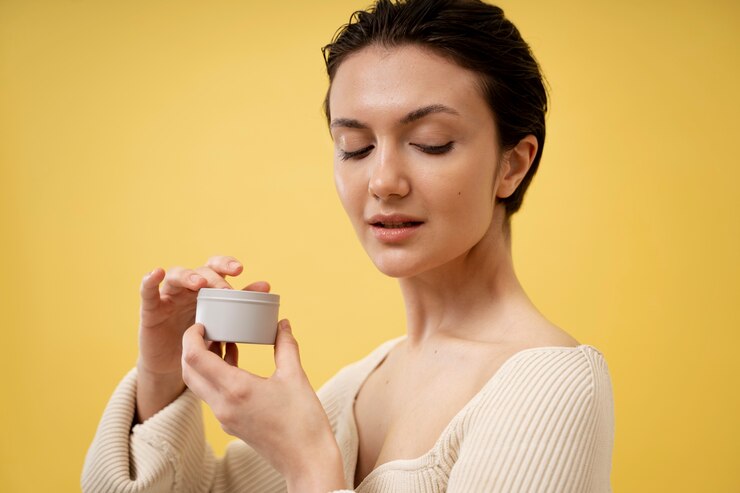
Advantages of Using a Natural Face Moisturizer
1. These creams can help to reduce wrinkles:
2. Moisturizers are ideal for your skin:
3. The oils protect your skin:
4. The creams shrink enlarged pores:
5. The moisturizers down rashes:
What to Consider When Looking for Moisturizers for Rosacea
Moisturizing your skin is a great way to protect your skin when treating rosacea. Some natural face moisturizers offer protection against environmental factors that exacerbate rosacea symptoms.
Before you settle on a moisturizer, read this review carefully, and always talk to your dermatologist.
- Avoid moisturizers that have too many fragrances. You should also avoid harsh cleansers, or any products that contain alcohol as they may contribute to rosacea outbreaks.
- Watch out for rosacea irritants found in different skin care products. They include alcohol, fragrance, Hazel, eucalyptus oil, peppermint and menthol. Other things you want to avoid include exfoliating agents, astringents and anything else that’s harsh for sensitive skin.
- Test any product on a peripheral area before you apply it on your skin. That will help you avoid any product that you react to and take note of the ingredients. Rosacea irritants vary from one person to another, and your own skin’s reaction should be your guide.
Mistakes to Avoid When Applying Moisturizers
Over saturating your skin
Rubbing the skin too hard
Not allowing the cream to sink in
Forgetting the area under the eyes
Forgetting the neck area
What you Should Know Before Using Moisturizer for Rosacea
1. Premature wrinkles:
2. Your complexion may be dull and flaky:
3. Your layer of protection may become lost:
4. Your skin may become itchy:
Read the Label
Sensitive skin
Best organic face lotion for dry skin: Skin care products are characterized to suit different skin types. Common skin types include oily, dry, combination, and sensitive. Rosacea makes your skin dry; that doesn’t necessarily mean you should use moisturizers for people with dry skin. They contain too much oil, emollients and humectants that can be hard on your skin. The irritant potential outweighs the potential hydrating properties you get. Choose a mild moisturizer formulated for sensitive skin since they moisturize your skin and are gentle.
Bland moisturizers
These moisturizers are free from harsh ingredients that irritate the skin. You want to avoid anything that can trigger a flare-up. Avoid using moisturizers that have redundant components. The best products alleviate your skin’s dryness. Avoid moisturizers with alcohol, fragrances and related additives.
Avoid acne treatment products
Regardless of whether your rosacea is accompanied with pimples, it is not advisable to use moisturizers formulated for treating acne. They have ingredients such as benzoyl peroxide and salicylic acid that can dry your skin. Consult a dermatologist for the best way to treat acne while dealing with rosacea.
Calming ingredients
Try using moisturizers that have a calming effect on your skin to reduce the symptoms of rosacea. Chamomile, aloe and green tea are natural products that have a soothing effect. That will help to lessen the redness and inflammation you could be experiencing.
Sunscreen
Exposure to the sun is a known trigger for rosacea flare ups. Choose a moisturizer with an SPF 15 protection or higher or stay covered!
5 of the Best Moisturizers for Relieving Rosacea Reviewed
1. Miravage Facial Redness and Rosacea Relief Cream & Anti-Aging Moisturizer Serum
PROS
- You can wear it under your makeup
- Offers anti-aging benefits
- There is no greasy feeling
- Quickly absorbed into your skin
CONS
- Has a light scent that lingers
2. Era Organics Face Cream
PROS
- 60-day money back guarantee
- Non-greasy formula
- Has anti-aging properties
CONS
- Can be a bit expensive
3. Aveeno Eczema Therapy Moisturizing Cream
PROS
- Recommended by dermatologists
- Fast acting formula that hydrates and soothes
- Steroid and fragrance free
- Reasonably priced
- Great packaging for easy use
CONS
- Relatively thick formula feels heavy during application
4. HoneySkin Organics Aloe Vera Ultimate Face and Body Cream
PROS
- Organic product
- Doesn’t have fillers like mineral oils, parabens or water
- Light non-greasy formula
- No fragrance
CONS
- A little bit costly
- Few people allergic to some ingredients
5. La Roche-Posay Soothing Moisturizer
PROS
- Fragrance free
- Reduces chances of skin dryness
- Easy to apply light texture
CONS
- It is relatively expensive
Conclusion
Dermatologists still have a long way to go with regards to rosacea. Scientists are still learning what its real causes are and the best way to treat it. While there may be some genetic factors, the environment has a big contribution as well. There are different underlying factors causing rosacea. People battling it should make choices that eliminate the risk of outbreaks. Take note that your diet can trigger rosacea flare ups. You want to avoid spicy foods, hot foods and drinks, and alcoholic beverages. But a moisturizer designed for those suffering from rosacea can definitely help for some. As per the review, the Honeyskin Face & Body Cream stands out to me as the best moisturizer for rosacea here. Just remember that everyone’s skin reacts differently. Trial & error and speaking to your dermatologist are a couple ways you can figure out which cream will work for your skin.
-
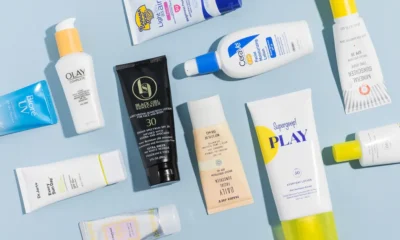
 Skin2 days ago
Skin2 days agoNatural Oil-Free Face Moisturizer Reviews & Buyers Guide
-

 Skin9 months ago
Skin9 months agoAbout Face Beauty: Tips for Enhancing Your Natural Beauty
-
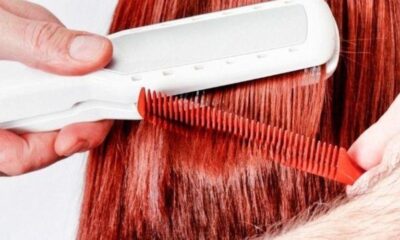
 Hair10 months ago
Hair10 months agoDoes a Flat Iron Kill Lice? Fact or Myth?
-
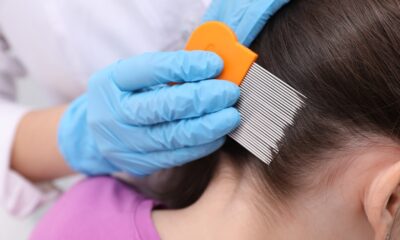
 Hair2 months ago
Hair2 months agoDoes a Flat Iron Kill Lice? Fact or Myth?
-

 Skin1 week ago
Skin1 week agoNeutrogena Naturals Multi-Vitamin Nourishing Face Moisturizer Review
-

 Hair10 months ago
Hair10 months agoFunction of Beauty: Personalized Hair Care for Your Unique Needs
-
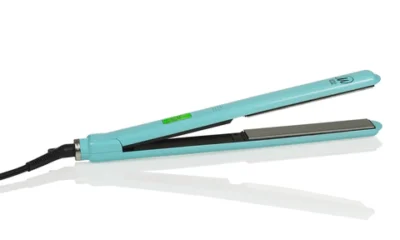
 Hair1 week ago
Hair1 week agoTitanium Flat Iron vs Ceramic
-

 Skin9 months ago
Skin9 months agoBeautiful Nails: Tips and Tricks for Healthy and Gorgeous Nails

